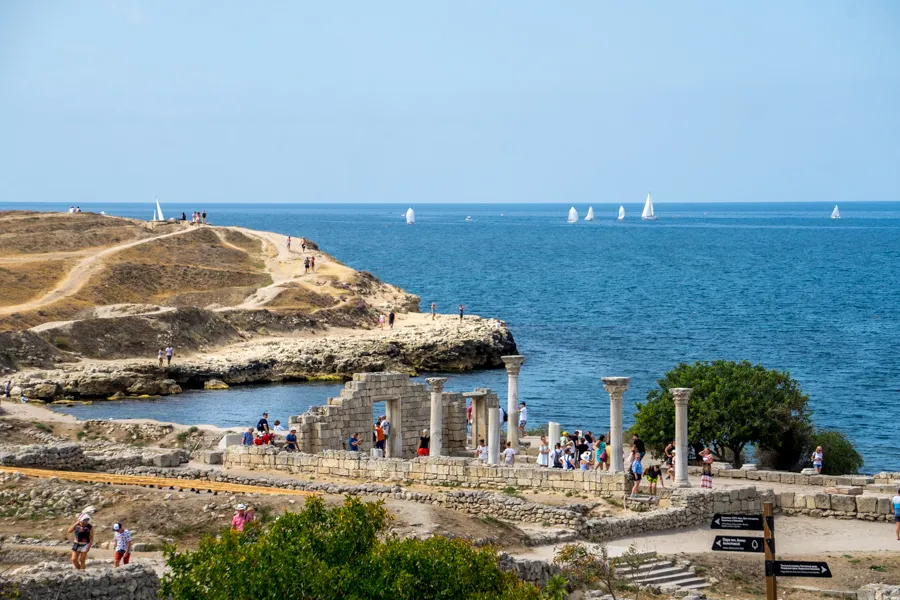

The most ancient visual part of the city of Sevastopol is Tauric Khersonesos. Or simply Chersonesos. This is undeniable. This is where we will go today.
According to the official version, this city was founded by the ancient Greeks on the Heracles peninsula on the southwestern coast of Crimea. May be so. But I think that this place has even more ancient history. Winners write history. And its description does not always correspond to the truth. But we will not deal with questions of alternative history.
It is officially believed that Khersonesus was founded in 424-421 BC. e. as an ancient Greek colony by immigrants from Asia Minor Heraclea of Pontic. The city consisted of a fortress and a choir - plots where the townspeople were engaged in agriculture. Grapes and cereals were traditionally grown. Choirs were also part of the defense structures of Chersonesos.
The visible part of the ancient city is concentrated on the Black Sea coast, 3 km from the center of Sevastopol.
Unfortunately, most of the buildings and structures have not survived to our time due to the destruction during the wars and simply from time and weather conditions. The first excavations for scientific purposes at the site of the deceased Khersonesos were carried out in 1827, by order of the chief commander of the Black Sea Fleet and ports, A.S. Greig. Since then, excavations have continued to this day.
At present, the open-air museum of Tauric Khersonesos is founded here. He has his own [website on the Internet] (https://chersonesos-sev.ru/).
Ancient foundations can be seen directly on the seashore. According to them, one can make an assumption about a rather dense building of the settlement. This is understandable, the land fenced with fortress walls is always scarce, and for the life of the townspeople and the military garrison, many buildings of various purposes are needed.
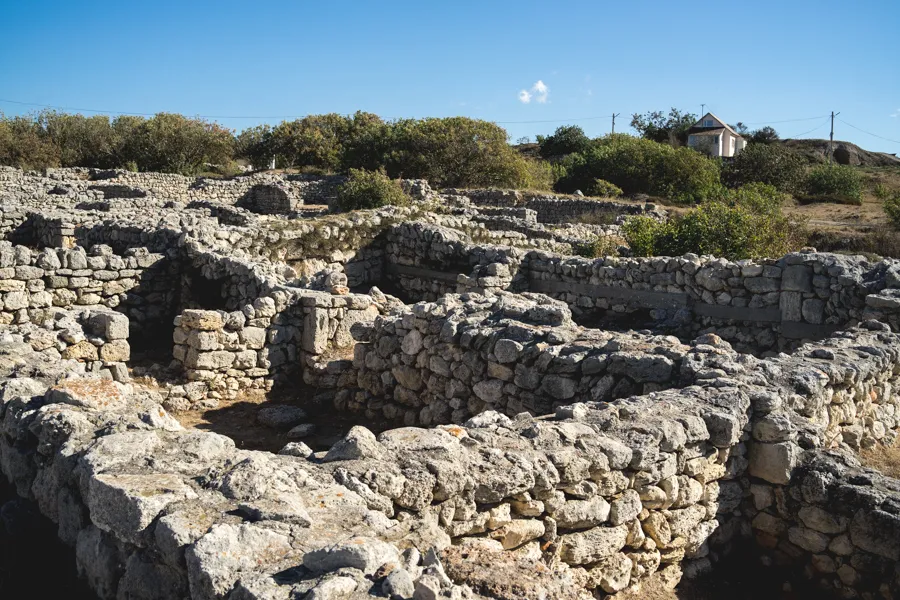

The purpose of our visit today will be the antique amphitheater, built in the first half of the 3rd century BC and used for its intended purpose for almost a century and a half.
When I was in Sevastopol in 1978, this theater was behind fences. There were a lot of wild thickets around and I'm not sure if the theater was visited by tourists. In any case, I did not see him and did not even hear about him then.
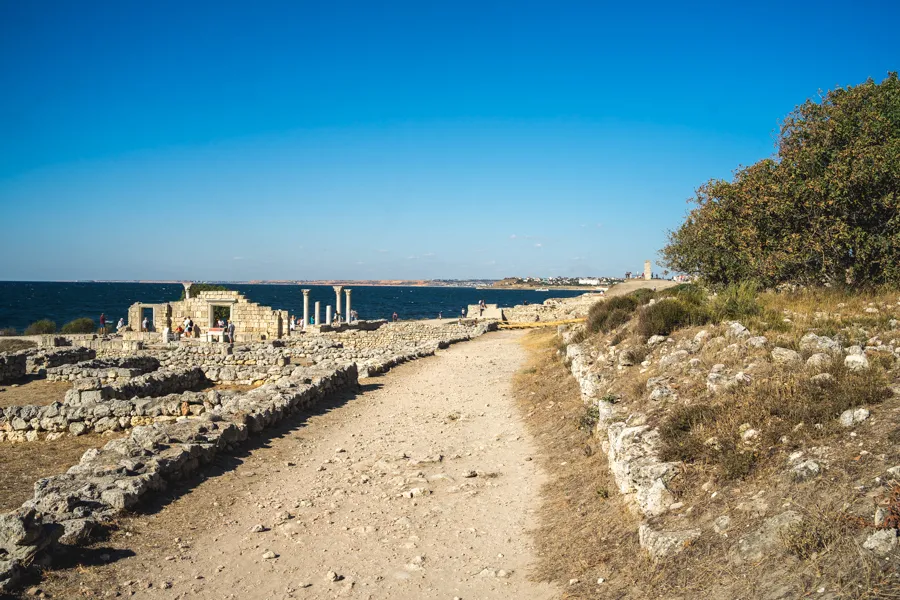
With our backs to the sea, we will go towards the theater.
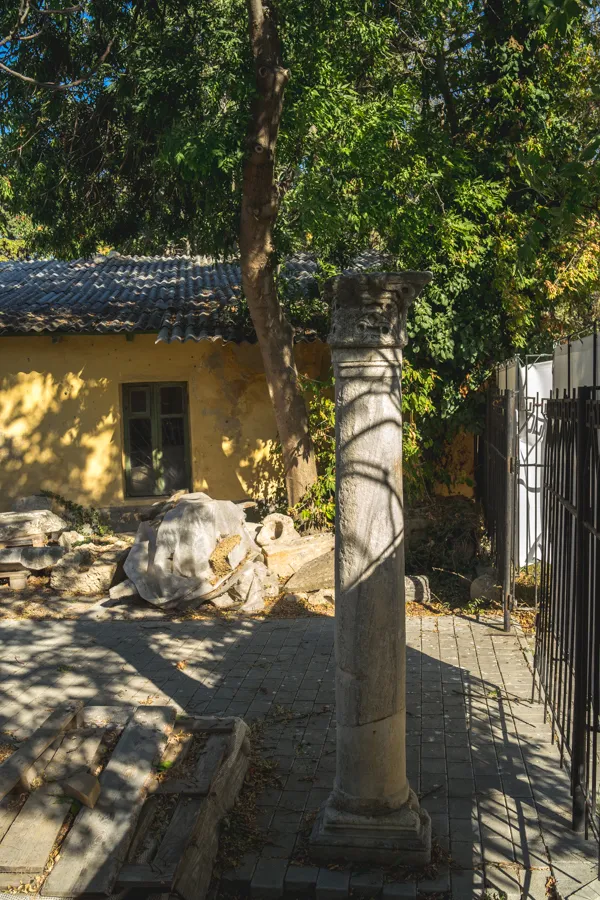
On the way, we will look where the entrance is prohibited for everyone except the museum employees. I was lucky the gate was unlocked.
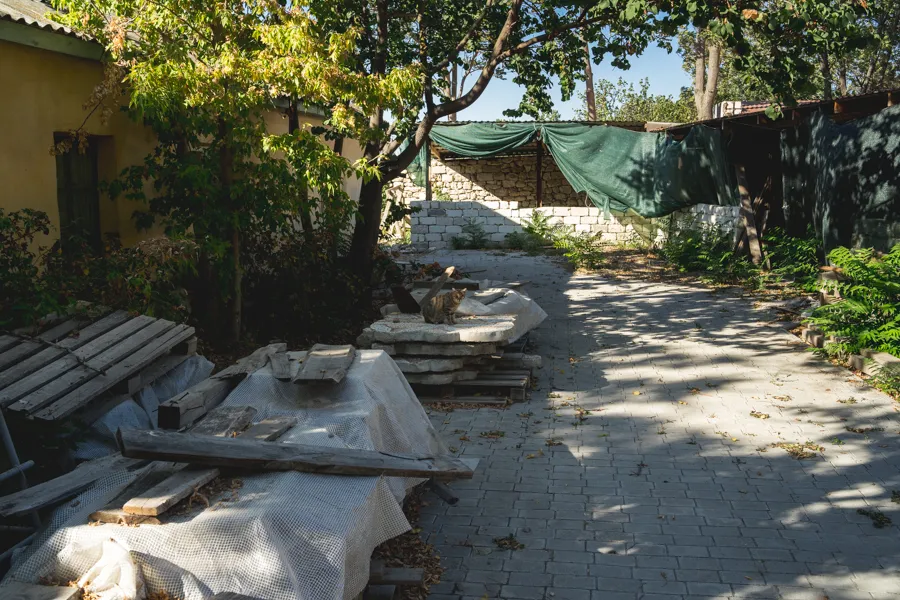
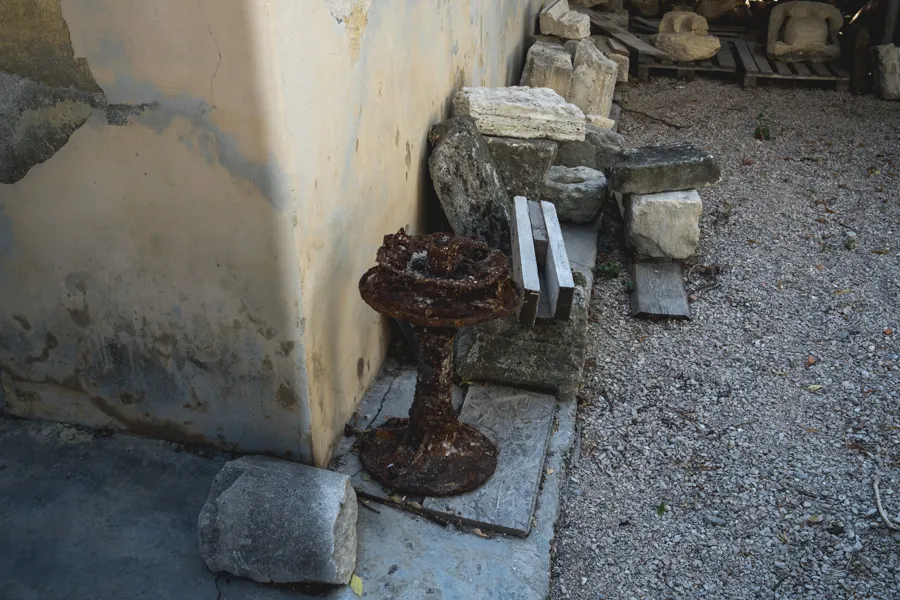
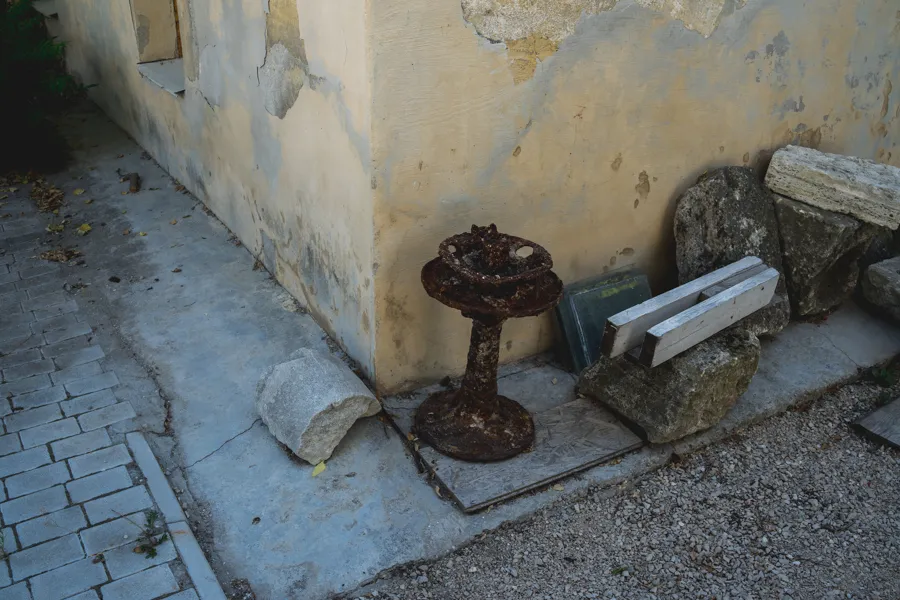
This is a small courtyard with a service area and several artifacts on site. I will not describe them. See for yourself. Soon we were asked to leave and I was unable to take enough photos.
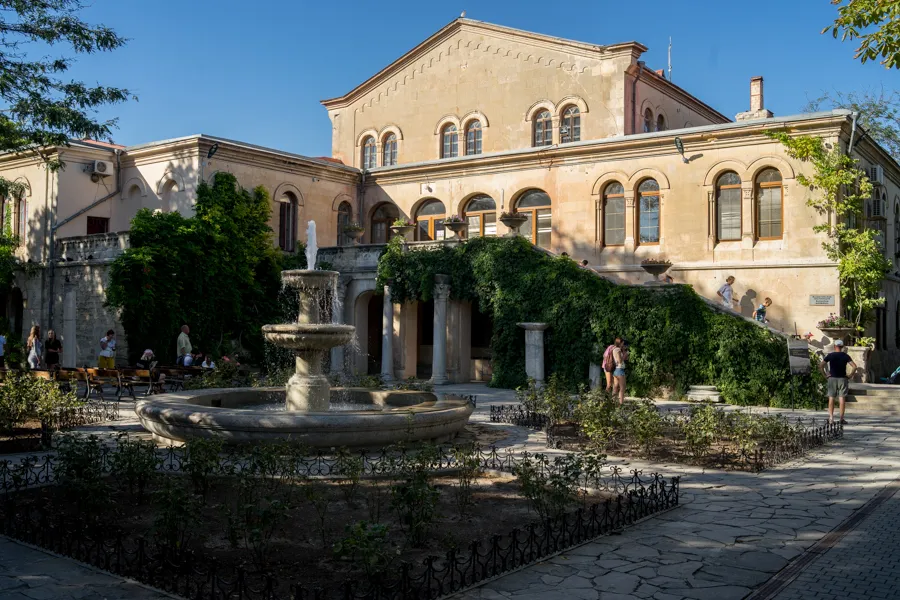
On the way, we see the building of the "Byzantine Exposition", which is located in the premises of the former Korsun Church. We will come back here and get to know this place in more detail.
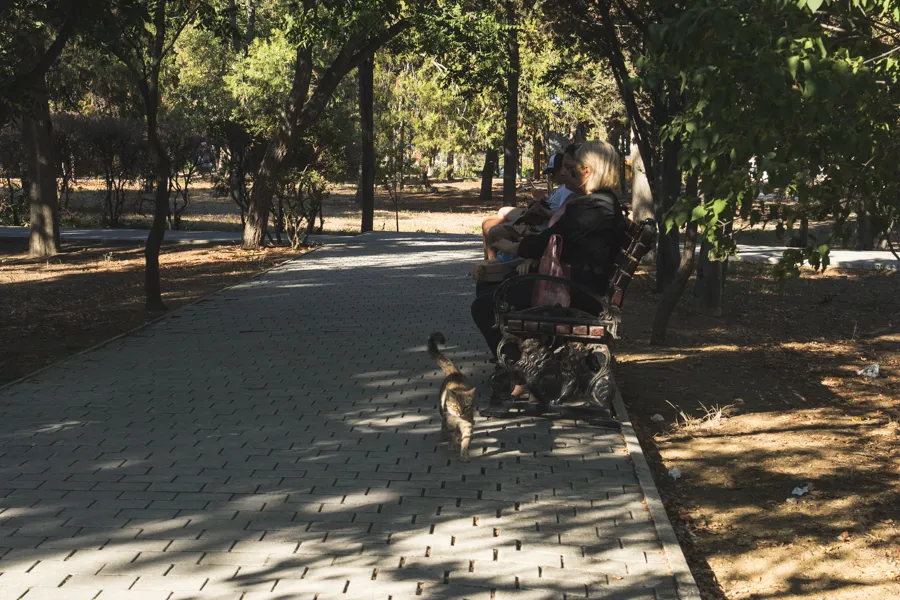
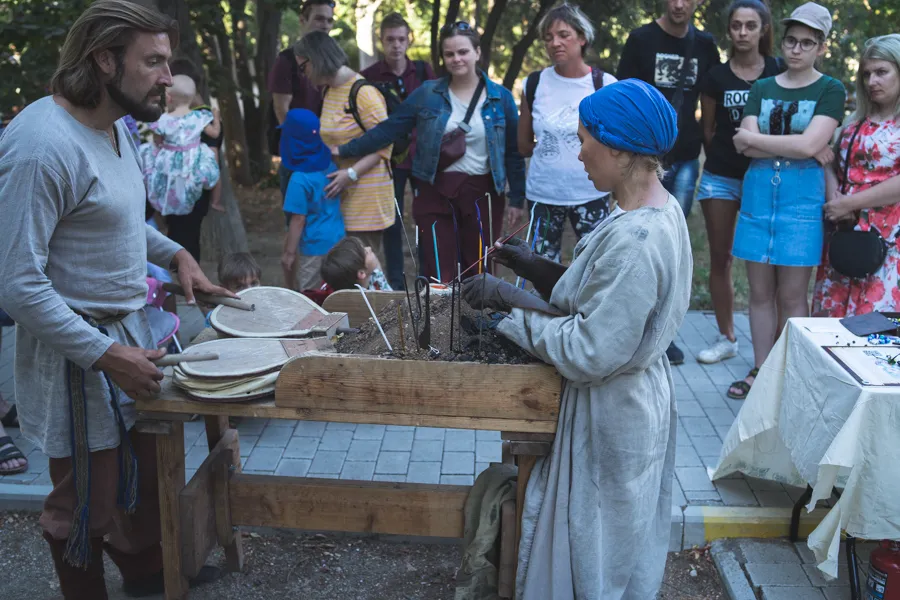
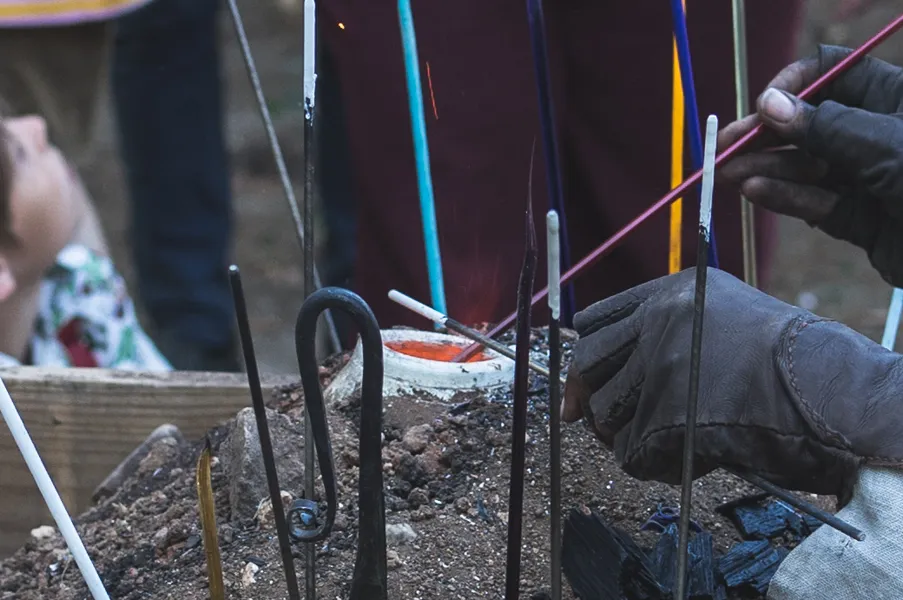
The shady garden provides shelter to tired tourists. Here you can take a breath from the summer heat and take part in various entertainment. For example, see and take part in the production of colored glass souvenirs. A stove, a forge and everything needed for this craft are installed right in the garden.
As you can imagine, the most important element here is the man fanning the fire. Without it, everything else makes no sense :)
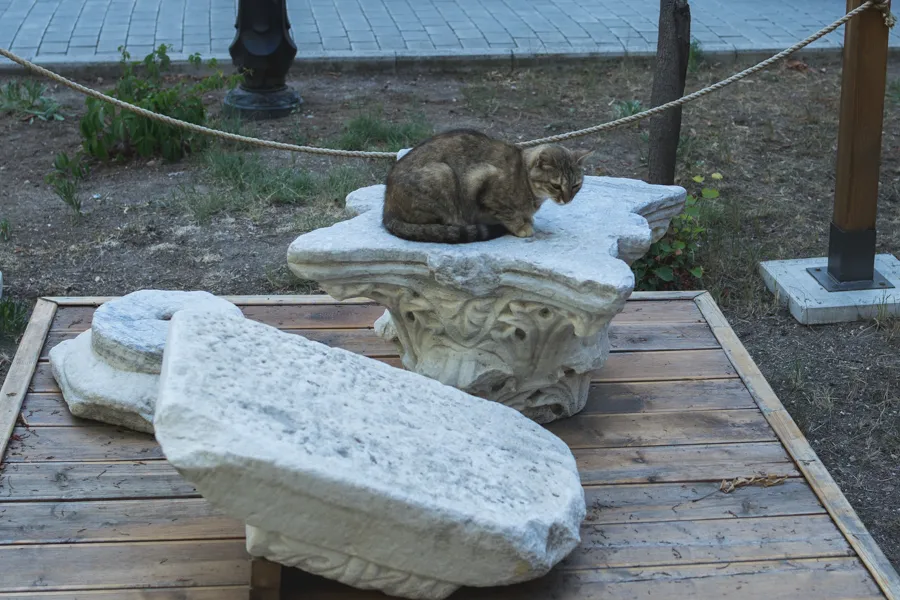
Touch the antiquity of this place with the cat.
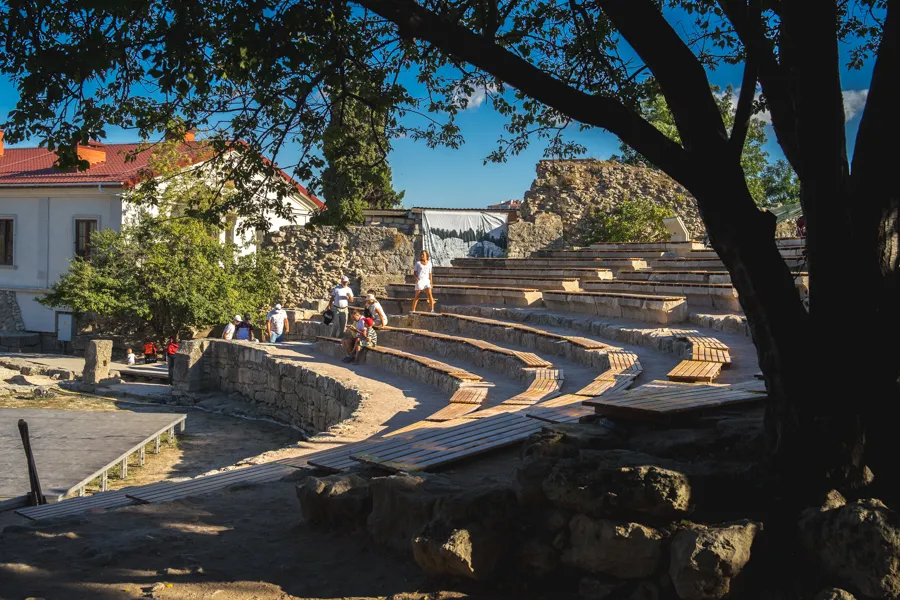
Finally, we leave the shady garden and immediately get to the purpose of our visit for today.
The architecture of this theater is typical of its time, but with the change of regimes and religions, the theater was expanded, then rebuilt, then it was generally closed and two Christian churches were built on its territory. What I will show you now is all that has survived to this point in time.

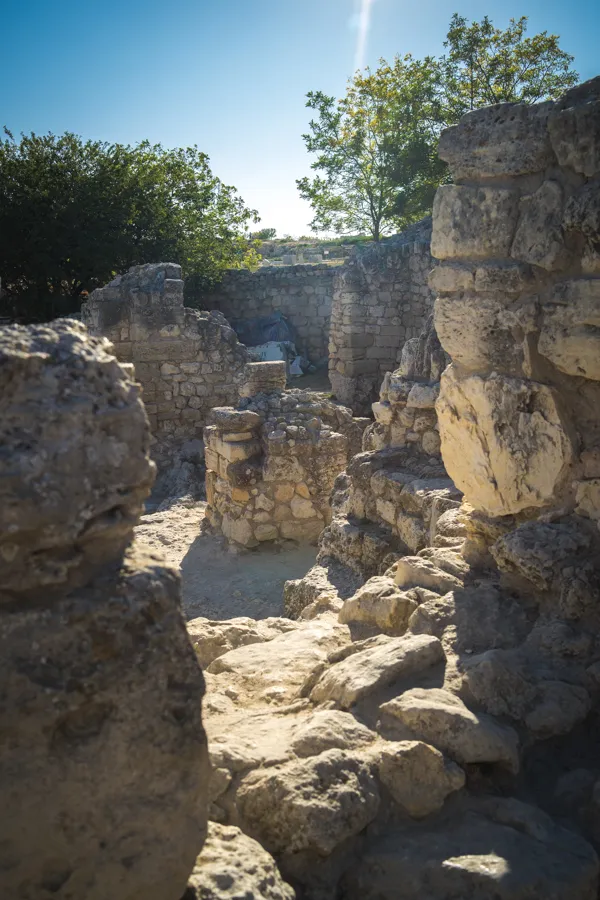
As a photographer, this suits me perfectly. It has an interesting shape, color, space. But, unfortunately, a lot of interesting things have been lost. The only thing that remains here for sure is the Spirit of that time.
Probably, then I should shut up ... I think that for an experienced architect and an inquisitive eye, these ruins will tell more than I can describe in words. I already talked a lot ...
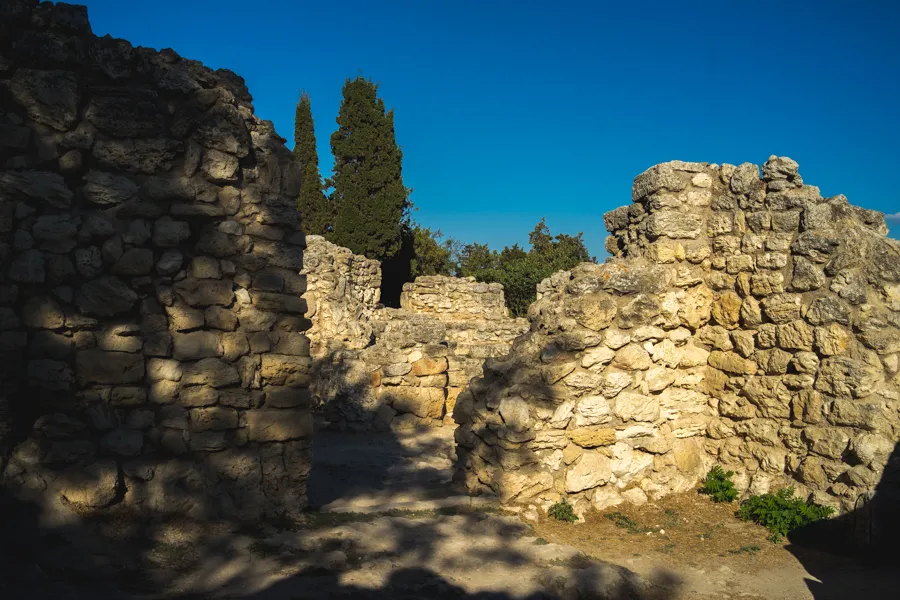
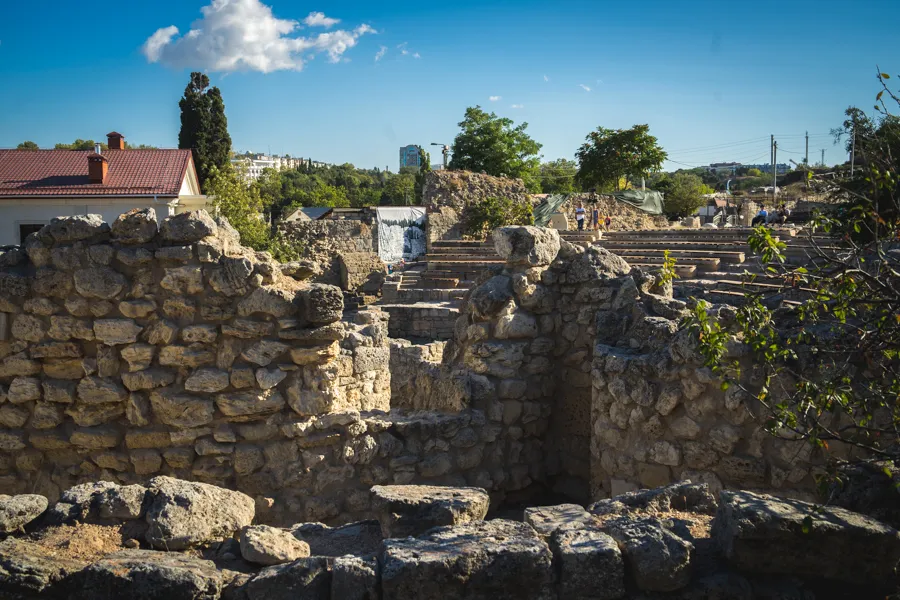
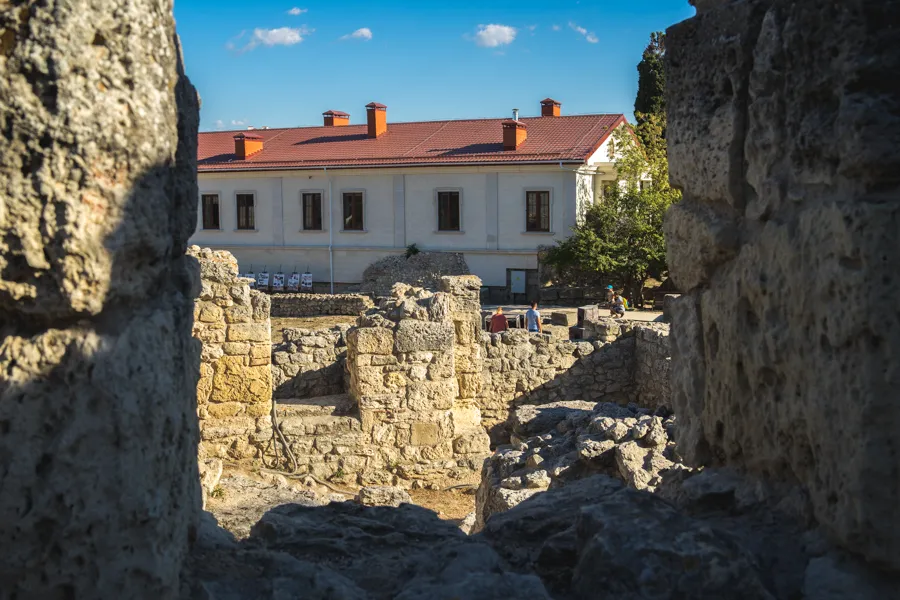

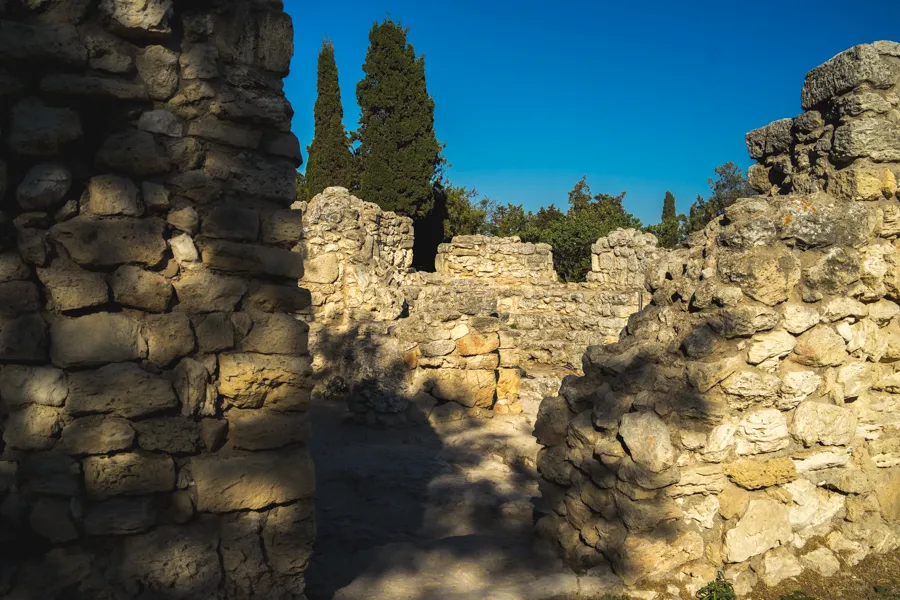
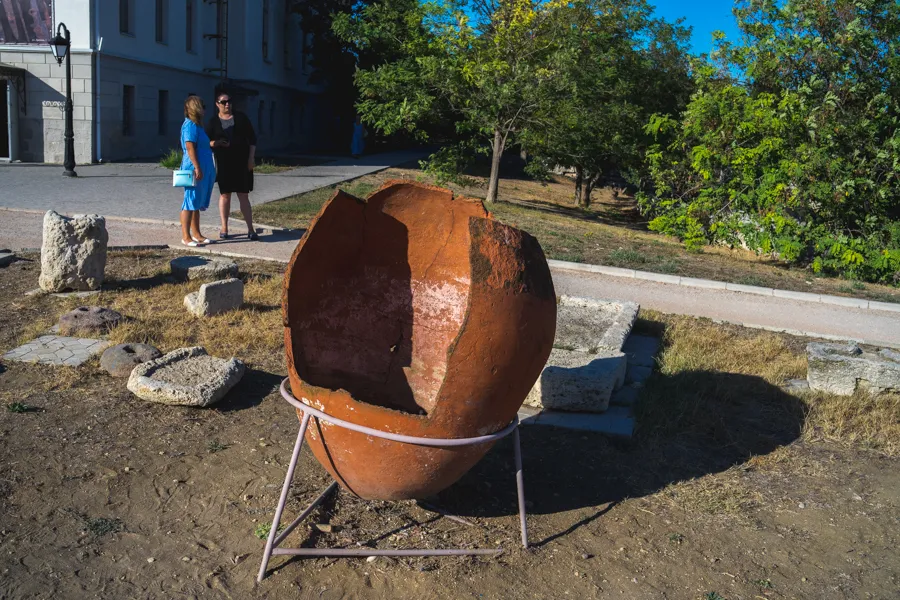

We have not finished the story with Khersonesos yet. But I think there are already too many words and photos.
To be continued.

| ▽ | ▽ |
|---|---|
| Camera | Sony A7М2 |
| Lens | Samyang 1.4 35 |
| Location | Russia |
| Post production | in LR |
Manual processing in Lightroom
From Russia with Love



